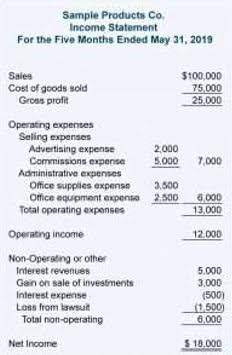Content

Both small and large stock dividends cause an increase in common stock and a decrease to retained earnings. Stock dividends also provide owners with the possibility of other benefits. For example, cash dividend payments usually drop after a stock dividend but not always in proportion to the change in the number of outstanding shares. An owner might hold one hundred shares of common stock in a corporation that has paid $1 per share as an annual cash dividend over the past few years (a total of $100 per year).
The distribution of profits by other forms of mutual organization also varies from that of joint-stock companies, though may not take the form of a dividend. Payment date – the day on which dividend cheques will actually be mailed to shareholders or the dividend amount credited to their bank account. Property dividends or dividends in specie (Latin for “in kind”) are those paid out in the form of assets from the issuing corporation or another corporation, such as a subsidiary corporation.
COMPANY
Additionally, the split indicates that share value has been increasing, suggesting growth is likely to continue and result in further increase in demand and value. A dividends in accounting stock dividend distributes shares so that after the distribution, all stockholders have the exact same percentage of ownership that they held prior to the dividend.

Retained earnings are shown in the shareholders’ equity section on the company’s balance sheet – the same as its issued share capital. Public companies usually pay dividends on a fixed schedule, but may declare a dividend at any time, sometimes called a special dividend to distinguish it from the fixed schedule dividends. Cooperatives, on the other hand, allocate dividends according to members’ activity, so their dividends are often considered to be a pre-tax expense. The $1,000,000 value of the dividend is determined by multiplying the 50,000 shares to be issued (10% × 500,000 outstanding shares) by $20 . The date of declaration is the date the Board of Directors formally authorizes for the payment of a cash dividend or issuance of shares of stock. On this date, the value of the dividend to be paid or distributed is deducted from retained earnings.
What Happens to Shareholder’s Equity When the Firm Issues More Shares?
The record date is the date on which the company compiles the list of investors who will be paid a dividend. When a company pays a dividend, it has no impact on the Enterprise Value of the business. However, it does lower the Equity Value of the business by the value of the dividend that’s paid out. When a dividend is declared, it will then be paid on a certain date, known as the payable date.
A well laid out financial model will typically have an assumptions section where any return of capital decisions are contained. Managers of corporations have several types of distributions they can make to the shareholders. A share buyback is when a company uses cash on the balance sheet https://www.bookstime.com/ to repurchase shares in the open market. As a result of above journal entry, the Manchester Inc. would debit its dividends payable account and credit cash account by $650,000. The trend of dividend payments within a business might be an early signal of financial troubles or prosperity.
Impact of a Dividend on Valuation
Though dividends can signal that a company has stable cash flow and is generating profits, they can also provide investors with recurring revenue. Dividend payouts may also help provide insight into a company’s intrinsic value. Many countries also offer preferential tax treatment to dividends, where they are treated as tax-free income. A high-value dividend declaration can indicate that the company is doing well and has generated good profits. But it can also indicate that the company does not have suitable projects to generate better returns in the future. Therefore, it is utilizing its cash to pay shareholders instead of reinvesting it into growth.
How do you record dividends in accounting?
To record a dividend, a reporting entity should debit retained earnings (or any other appropriate capital account from which the dividend will be paid) and credit dividends payable on the declaration date.
For practical reasons, the SNA does not recommend attempting to align dividend payments with earnings except in one circumstance. The exception occurs when the dividends are disproportionately large relative to the recent level of a company’s dividends and earnings. BEA has, on rare occasions, applied this treatment to exceptionally large payments of special dividends that result from changes to a company’s financial structure. These shareholders do not have to pay income taxes on stock dividends when they receive them; instead, they are taxed when the investor sells them in the future.
Types of dividends
This is when it’s made public that the company will issue a payment to shareholders in the future. Janis Samples receives forty of these newly issued shares so that her holdings have grown to 1,040 shares. After this stock dividend, she still owns 10 percent (1,040/10,400) of the outstanding stock of Red Company and it still reports net assets of $5 million. The investor’s financial position has not improved; she has gained nothing as a result of this stock dividend. To illustrate, assume that the Red Company reports net assets of $5 million. Janis Samples owns one thousand of the outstanding ten thousand shares of this company’s common stock. She holds a 10 percent ownership interest (1,000/10,000) in a business that holds net assets of $5 million.

Distribution to shareholders may be in cash or, if the corporation has a dividend reinvestment plan, the amount can be paid by the issue of further shares or by share repurchase. Companies record dividends paid on its annual statement of cash flows as well as the statement of stockholder’s equity. The dividend payment appears as a separate line item on the statement of stockholder’s equity.
How to account for dividends
In addition, there is a recession in place and the board has suspended dividend payment because the firms cash flow has been affected. In such a situation, the preferred shares would have accumulated dividends.
- A stock-investing fund pays dividends from the earnings received from the many stocks held in its portfolio or by selling a certain share of stocks and distributing capital gains.
- A retail co-op store chain may return a percentage of a member’s purchases from the co-op, in the form of cash, store credit, or equity.
- For each one hundred shares that a stockholder possesses, Red Company issues an additional 4 shares .
- If cumulative, a note to the financial statements should explain Wington’s obligation for any preferred stock dividends in arrears.
- Other businesses stress rapid growth and rarely, if ever, pay a cash dividend.
Dividend yield refers to the percentage of the share price that gets paid back as a dividend. This type of dividend is generally applied in context to the holders of cumulative preference shares. The board of directors of the company then approves the planned dividend. Record date – This is the date when it is usually decided as to who will receive the dividend. This means those in the register of the record date usually receive the dividend two days after the ex-dividend date.
Dividends payable
The day on which the Hurley board of directors formally decides on the payment of this dividend is known as the date of declaration. Legally, this action creates a liability for the company that must be reported in the financial statements. Only the owners of the 280,000 shares that are outstanding will receive this distribution.

A stock-investing fund pays dividends from the earnings received from the many stocks held in its portfolio or by selling a certain share of stocks and distributing capital gains. Common shareholders of dividend-paying companies are eligible to receive a distribution as long as they own the stock before the ex-dividend date. Dividends are a portion of a company’s earnings which it returns to investors, usually as a cash payment. The company has a choice of returning some portion of its earnings to investors as dividends, or of retaining the cash to fund internal development projects or acquisitions.
